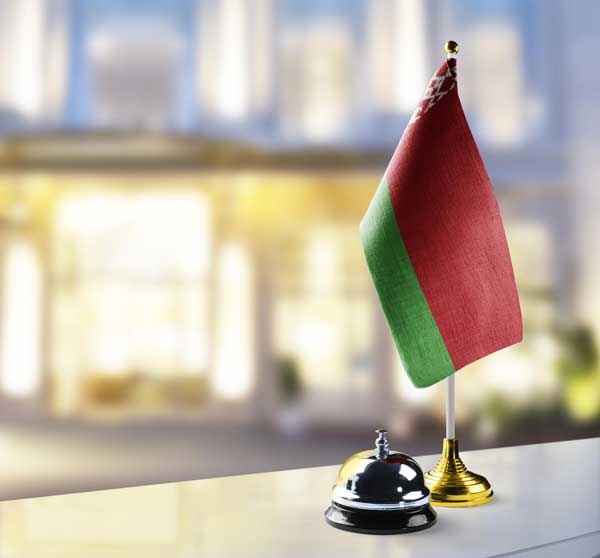Belarus, officially known as the Republic of Belarus, is a landlocked country in Eastern Europe. Once part of the Soviet Union, Belarus is now an independent state and maintains close ties with Russia. With over 9 million residents, it is larger than many European countries in terms of population and land area. Let’s take an in-depth look at what life and culture are like in this Slavic heart of Europe.

An Overview of Belarus Geography and Demographics
Belarus covers an area of 207,600 square kilometers and shares borders with Poland, Lithuania, Latvia, Russia, and Ukraine. The terrain consists largely of flatlands and forest, with almost 40% of the country enveloped by woodlands and lakes. As a result, Belarus lacks a coastline or direct sea access.
In terms of demographics, Belarus remains predominantly Slavic and Eastern Orthodox. Over 80% of the populace identifies as Orthodox, while Catholic and other faiths represent small minorities. Belarusian and Russian are the main languages, though Russian is more widely used in daily life. The population exhibits close cultural ties with Russia in language, faith, and heritage.
Belarus History and Path to Independence
Throughout history, Belarusian lands were divided and controlled by Russia, Poland, Lithuania, and other surrounding powers. During World War I, Germany occupied the region but ceded it after defeat. Belarus then became part of the Soviet Union until declaring independence in 1991 after the USSR dissolved.
Today, Belarus stands as a sovereign state but keeps close relations with Moscow as Russia’s main political and economic ally. The country is still progressing toward a fully modern society and retains some Soviet-era characteristics.
An Authoritarian System Reminiscent of the USSR
Belarus adheres to a political system bearing hallmarks of its Soviet past. The longtime president, Alexander Lukashenko, has retained power since 1994 and is often described as “Europe’s last dictator.” His authoritarian rule has faced criticism from the West over human rights violations and fraudulent elections.
Lukashenko openly endorses the death penalty, a policy no other European state upholds. While not frequently implemented, capital punishment remains legal, as seen by its use against perpetrators of a 2011 metro bombing. The restrictive governance deters foreign investment and tourism from wealthy nations to an extent.
Safety and Stability Maintained Through Covert Policing
Belarus enjoys low crime rates partly due to covert security measures. Plainclothes police officers pose undercover in public venues like parks, roads, nightclubs, and unisex bathrooms. Their subtle monitoring curbs the likelihood of assault, theft, and other offenses in spaces that might otherwise invite danger.
Upholding safety also stems from economic motives. As tourism contributes significantly to state revenue, Belarus aims to preserve a positive image for foreigners. However, this focus on order entails strict rules limiting free expression. Dissent toward officials can lead to arrest, so freedom of speech is inadequate.
An Overview of Belarusian Culture and Cuisine
While Belarus imposes constraints on civil liberties, locals emphasize courtesy and hospitality. Belarusian women tend to be outgoing and interested in meeting newcomers. Racism against immigrants is rare, and a little English suffices for basic communication.
Culinary culture revolves around Eastern European fare like dumplings, borscht, draniki potato pancakes, and kvass fermented drink. Most restaurants offer affordable pizza-like snacks but fewer traditional entrées. Due to high pork content, caution is needed when ordering meat dishes as a Muslim.
The Challenges of Daily Life for Locals
Many aspects of routine living prove challenging in Belarus. Salaries are low, with the minimum monthly wage around $135. The average take-home income, $400, leaves little for entertainment or recreation after covering food, rent, and utilities.
Consumer goods and produce prices are inflated, while housing costs have skyrocketed from migration sparked by the Ukraine conflict. Most apartments date back to Soviet construction and lack modern amenities. Vehicle ownership is limited, so dated Soviet-era models remain common on the roads.
Belarus Travel Tips and Closing Thoughts
On the positive side, Belarus offers visa-free entry for short visits, allowing easy access to a European destination. While the cold climate and high expenses didn’t appeal to me personally, it provides an intriguing look into a nation still evolving since the USSR era. The blend of old and new makes for an interesting experience.
In summary, Belarus rewards an open mind while requiring cultural awareness and financial prudence. Follow local etiquette, research thoroughly, and you may just uncover the charms of this little-known Slavic land.
I hope you enjoyed this extensive look at life, culture, and travel in Belarus.
